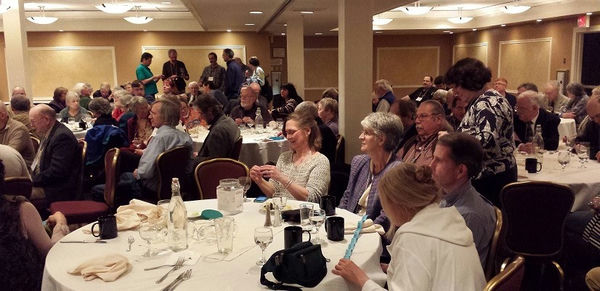



NEARA meets twice annually, in the Spring and Fall, at various locations around New England and eastern New York. Field trips normally take place on Friday afternoon and Sunday morning. We hold program sessions Friday evening and all day Saturday into the evening, with a longer keynote presentation after dinner.
We explore a broad range of topics at our conferences. The peopling of the Americas, pre-Columbian voyages, new technologies that help examine our world, and especially northeastern indigenous stonework have all been grist for our mill. Representative recent programs are linked below.
Conferences provide opportunities to network, purchase books, and participate in field trips to see examples of regional indigenous stonework and other structures.
For suggestions about where to hold conferences and about topics that you would like to see, contact the Vice President, whose responsibility is to organize and run conferences. For questions about attending an upcoming conference, contact the Registrar.
It takes a lot of work to assemble a good program for a conference. We would like it if all NEARA members would give us their suggestions for speakers who they would like to see. So we have created a form for you to fill out for each person you recommend: Suggest a Speaker
Please try to provide as much detail as you can for each candidate presenter, because that will make it easier for us to decide that they should be contacted to see if they are available. However please realize that with so many interesting people out there, that it may be a while before their schedule and ours line up.
Will be in Brockton MA.
The standard field trip waiver and non-disclosure agreement is at: Field Trip Liability Waiver and Non-disclosure Agreement
This conference will feature a focus on the overall subject of civilizations, including how they are defined and the indicia of their presence. Several perspectives will be offered on this important and complex subject, including how this subject pertains to the Northeast.
When the Spanish began to enter southeastern North America in the early 16th Century, they reported still active vestiges of the great mound building tradition of the Mississippian civilization. In the 18th Century, with the westward expansion into the Ohio Valley, early explorers and settlers encountered complex and massive geometric earthworks that were intuitively perceived to be remnants of a vanished civilization. Most of these monumental constructions were of earth, but some were stone. Scholars back East were intrigued by this subject. This 1786 Ohio earthworks survey survives among the correspondence of Thomas Jefferson, sent to him by Yale president Ezra Stiles.
By 1848, when the Smithsonian published its first work, Ancient Monuments of the Mississippi Valley by Squier and Davis, the publication contained numerous surveys acquired over decades of work. It remains the most significant work the Smithsonian has produced. 30 years ago, when Mavor and Dix replicated for the Northeast what Squire and Davis had done further west 141 years earlier, the subtitle of their book was The Sacred Landscape of New England’s Native Civilization. A similar history of the modern recognition of the ancient ceremonial architecture of the Anasazi civilization of the Southwest could be related. It has long been evident the Americas contain a complex history of advanced societies, far more detailed than the simplistic Maya, Aztec and Inca sequence of popular conception.